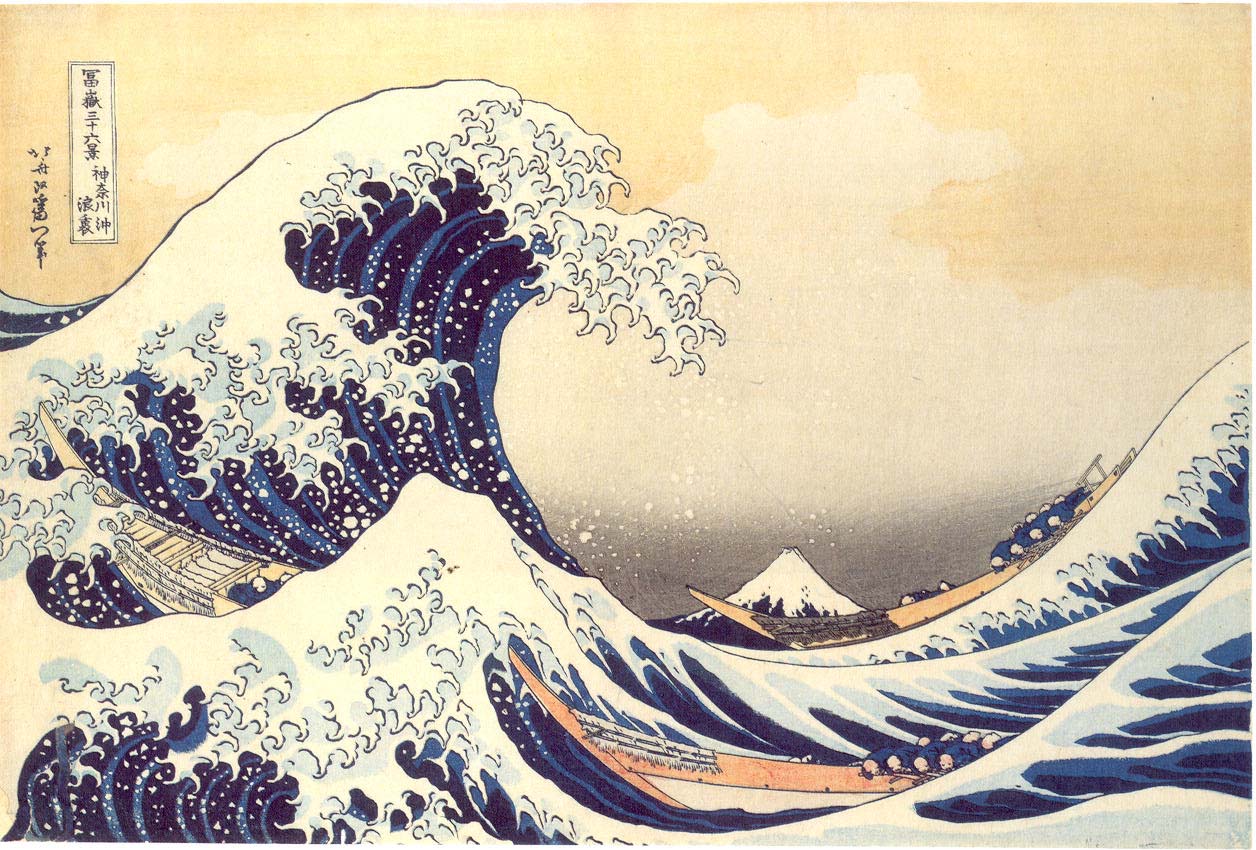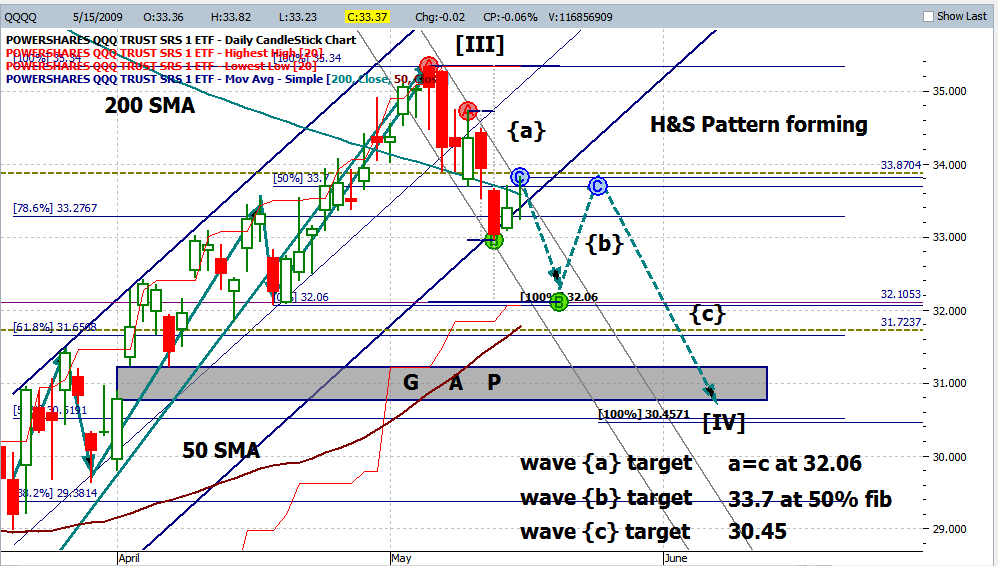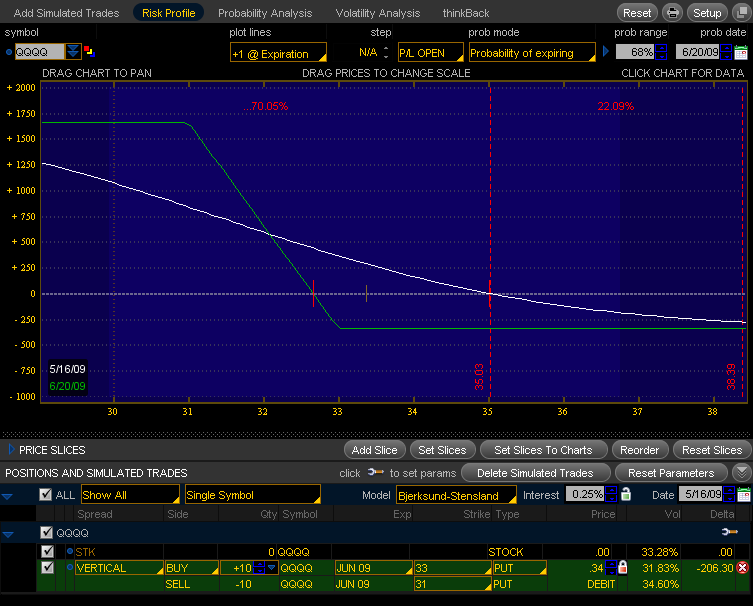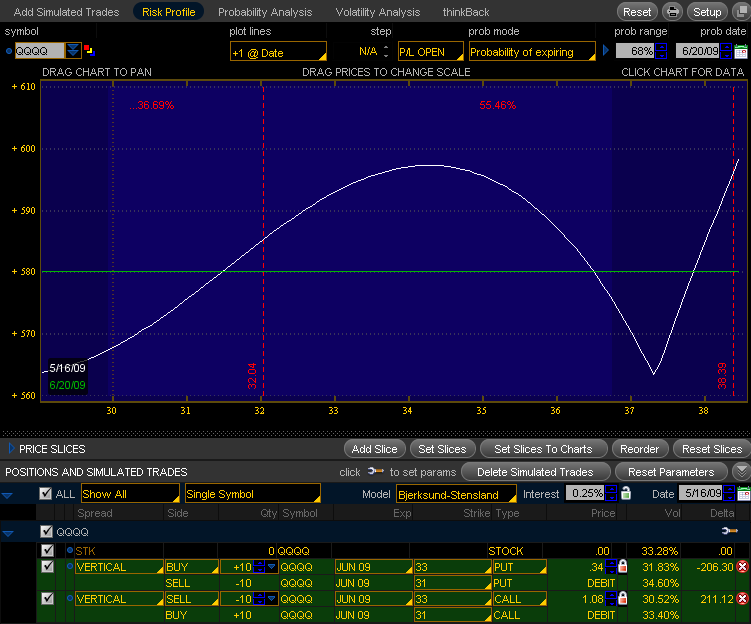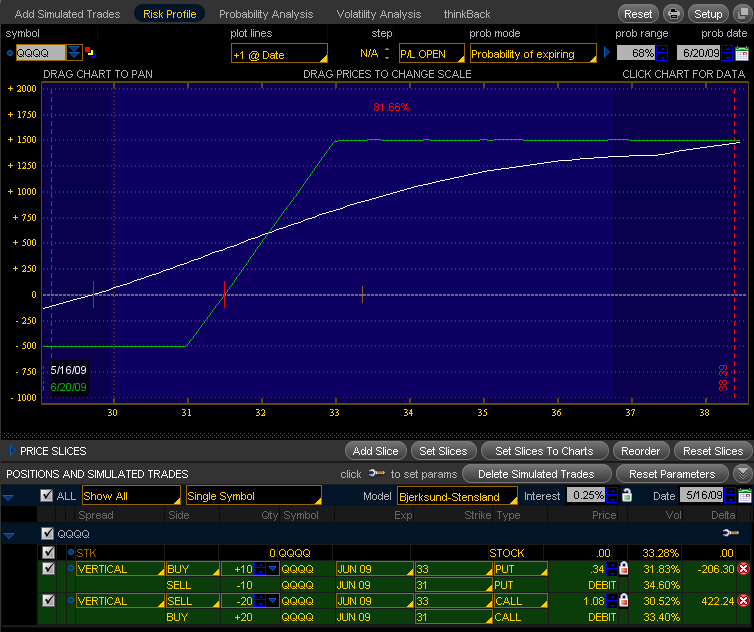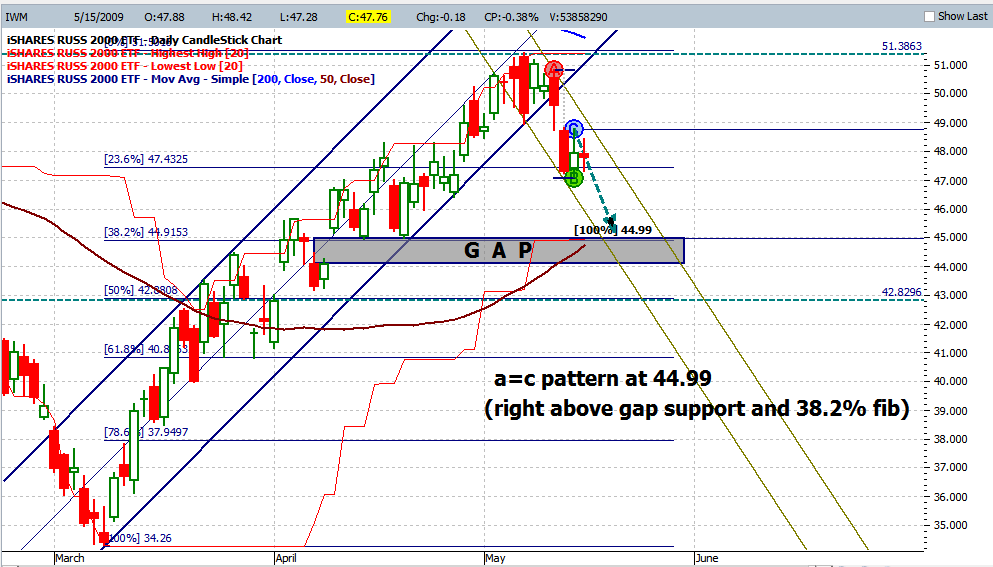Hedging Technique
Hedging Technique
Fujisan here.
I normally spend 3~5 hours on updating charts and going over some materials, etc., in preparing my weekend post, but I’m heading out to sunny California this weekend, so I’m going to make it nice and quick.
Here is my updated Qs chart. If you take May 11 high (34.72) and May 13 low (32.96), and apply the difference of 1.76 to today’s high of 33.82, you would come up with 33.06, matching up exactly with April 20’s low of 33.06. I love it when all these numbers are coming together and start making sense.
W4 Target
Here are my short term targets for W4:
Wave {a} target 32.06
Wave {b} target 33.7~34.0 (50%~61.8% retracement of Wave {a})
Wave {c} target 30.45~30.85 (100% extension of Wave {a}) – match up with 50% retracement of previous impulsive wave.
Now, Qs accomplished 3 major rejections today; namely,
1. Rejection of 200 SMA
2. Rejection of upper boundary of the current downward channel (thanks for your updates, Mole!)
3. Rejection of lower boundary of the previous upward channel (Qs closed right underneath)
Based on these facts, together with OPX today, I am expecting a volatile session on Monday (remember, Monday after OPX is the most volatile day of the month).
Game Plan
Now, here are the game plans that I have put together on Thursday:
- Add on June 33/31 put spreads on Thurs and Friday.
- Close out 50% of the position around 32.06~32.12 area (end of wave {a})
- Hedge your position with 33/31 call spread or you can double up your call position if you like to ride wave {b} correction.
- Qs will come back up to retest 200SMA around 33.7~34.0 area. Close out 33/31 call spreads upon a successful rejection of 200SMA (end of wave {b}).
- Add on June 33/31 put spreads upon a rejection of 200 SMA.
- Close out June put spreads at the end of wave {c} currently projected around 30.45~30.85. If Qs comes down with much higher volume, this support may be taken out, so please watch out how it comes down.
Options vs Futures
As we are going through W4 correction, we should be expecting many whipsaw sessions going forward, but I wouldn’t recommend that you get in and out on every whip. Options are not made for daytrading vehicles, and this is the biggest difference from futures where you can get in and out on every hour and still able to make money due to high liquidity.
Options are made for “position” trading; i.e., you like to hold your position much longer, and in the meantime, you like to “hedge” your position in case the trade goes against you.
Hedging
Hedging could be used as an alternative method to a “stop loss”. I prefer “hedging” to a “stop loss” although they are technically the same, but it all comes down to trading disciplines and a “mental” part of the trading. Believe it or not, 85% of the trading is mental, and I tend to be discouraged when my stops are taken out and my losses are already “realized” and, as a result, I become very hesitent even when I see a perfect entry point afterwards.
On the other hand, with hedging, I will be still managing my positions, looking for a good entry/exit point, and possibly adding on to my hedging position to reverse its course from short to long or long to short, and eventually making money on the other side of the trade.
Bearish Position
This is Qs June 31/33 put debit spread with $35 entry point. This is a bearish position.
Hedged Position
Let’s say that you take 50% positions off the table at $32.06 and decided to hedge the remaining position with 31/33 call debit spreads. This is a 100% hedge and your position is basically flat (you are not making money in either direction). When hedging, you need to take the opposite corresponding positions with the same strike prices.
If you look at a green line (this is the P&L at OPX), you see a flat line right at $580. In other words, you were able to lock in your profit of $580 at $32.06 and you could sit tight on your position on its way up.
Bullish Position
Now, if you are more aggressive and you like to make money on its way up, you can increase the number of call options and create a bullish position. The below position illustrates 1 to 2 put/call ratio (i.e., you buy 20 call spread contracts against 10 existing put spread contracts with the same strike prices).
Now, after wave {b} is complete, you can close out your 31/33 call debit spreads with a nice profit, add on 31/33 put spreads, and ride wave {c} all the way down to 30.45~30.85 area.
(In reality, it won’t be that easy, but these are the examples of what could be done with hedging in case the trade goes against you).
IWM
Lastly, here is one more nice looking chart for IWM with perfect matching numbers. a=c pattern formation completing at 44.99, right above a gap support and 38.2% fib level.
I will be spending my weekend in sunny California. I will see (?) you guys on Monday when I get back. Have a good weekend, everyone.
Fujisan
Mole here: I find it necessary to point out that I disagree with this wave count although I believe that Fujisan has the general direction and depth of this retracement right. This might sound academic to many of you but I don’t want to start confusing people with competing counts.
Many thanks for sharing these hedging strategies however – great work, Fujisan.









